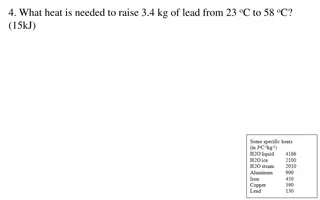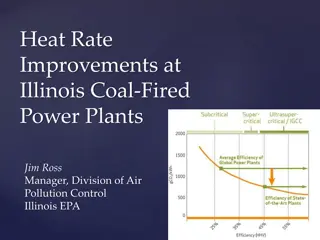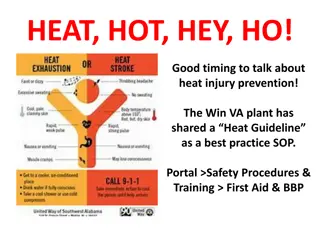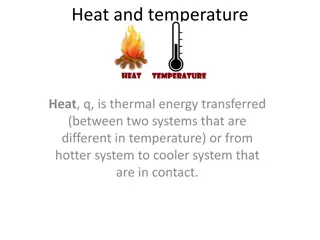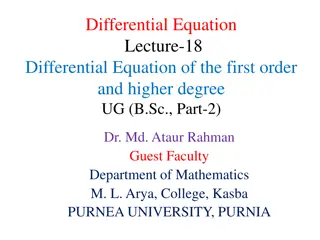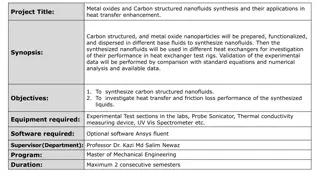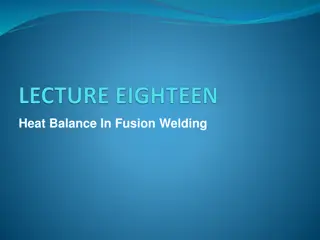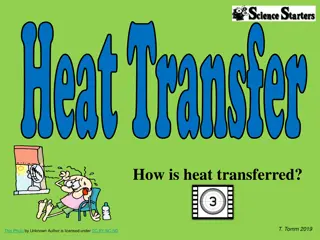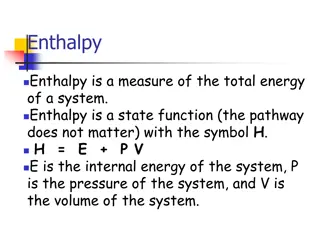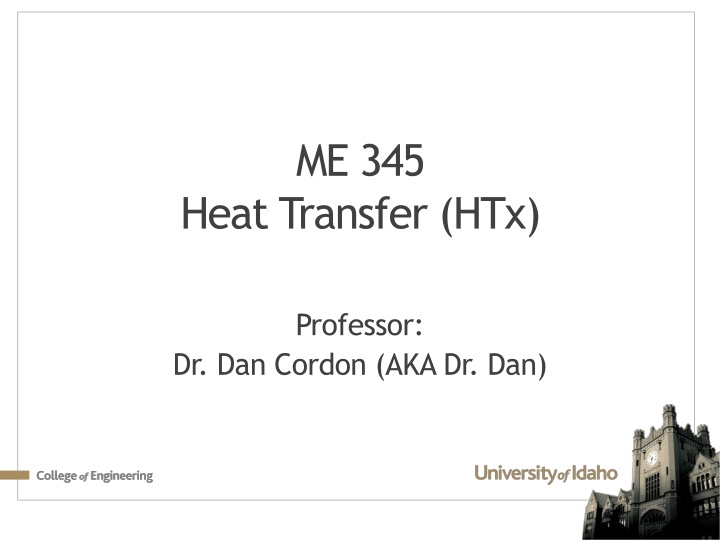
Heat Transfer: Forms, Equations, and Terminology
Explore the modes of heat transfer - conduction, convection, and radiation, along with the corresponding rate equations and textbook terminology. Discover how heat flux is correlated to temperature differences in various materials and mediums.
Download Presentation

Please find below an Image/Link to download the presentation.
The content on the website is provided AS IS for your information and personal use only. It may not be sold, licensed, or shared on other websites without obtaining consent from the author. If you encounter any issues during the download, it is possible that the publisher has removed the file from their server.
You are allowed to download the files provided on this website for personal or commercial use, subject to the condition that they are used lawfully. All files are the property of their respective owners.
The content on the website is provided AS IS for your information and personal use only. It may not be sold, licensed, or shared on other websites without obtaining consent from the author.
E N D
Presentation Transcript
ME 345 Heat Transfer (HTx) Professor: Dr. Dan Cordon (AKA Dr. Dan)
Plan For 2ndDay of Class Reminder about Forms of HTx Heat Rate Equations Terms in the Heat Equation Preview HW1 Let s draw a bunch of Heat Flow Diagrams!
Modes of HTx Conduction (HTx through solid or non-moving material) Convection (HTx between a moving fluid and another body) Radiation (HTx through magic)
Modes of Heat Transfer Conduction: Heat transfer in a solid or a stationary fluid (gas or liquid) due to the random motion of its constituent atoms, molecules and /or electrons. Convection: Heat transfer due to the combined influence of bulk and random motion for fluid flow over a surface. Radiation: Energy that is emitted by matter due to changes in the electron configurations of its atoms or molecules and is transported as electromagnetic waves (or photons). Conduction and convection require the presence of temperature variations in a material medium. Although radiation originates from matter, its transport does not require a material medium and occurs most efficiently in a vacuum.
Textbook Terminology Each behind a variable indicated that variable per unit length, so q is a heat rate per cross-sectional area (area perpendicular to direction of heat flow)
Rate Equations For each form of Heat Transfer there are rate equations that correlate heat flux (heat transfer per unit area) due to a temperature difference Conduction: Fourier s Law Convection: Newton s Law of Cooling Radiation: Stefan-Boltzmann Law (upper limit)
Conduction Rate Equation Average Heat Flux
Radiation Rate Equation Heat transfer of a body may include radiation emission (E) from the surface, and may also include absorption of radiation (irradiation, G) from the surroundings. Energy emitted E = Eb = (Ts)4 where E Emissive Heat Flux [W/m2] surface emissivity, which has a range of 0 1 Eb Emissive power of a blackbody (perfect emitter) Stefan-Boltzmann constant (5.67 x 10-8 [W/m2K4]) Energy absorbed Gabs = G(Tsur)4 where Gabs Absorbed Radiation Heat Flux [W/m2] surface absorptivity, which has a range of 0 1 G Irradiation [W/m2]
Special Case: Radiation A surface exposed to large surroundings of uniform temperature Tsur If = (grey body) the net radiation heat flux leaving the surface due to exchange with the surroundings is: ???? = ??? ?? = ??(??4 ???? 4)
Heat Equation Terms The Heat Equation is applying First Law (conservation of energy) to a system ??? is the rate of entering energy crossing the boundary ???? is the rate of exiting energy crossing the boundary ??? is the rate of that energy is accumulating/depleting inside the system ?? is the rate of energy being created or destroyed within the system
Draw More Heat Flow Diagrams Time for some of your HW0 examples?



